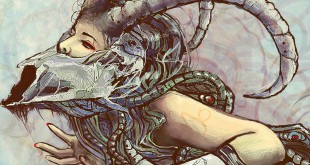 Sloth — The living sloths are a mere 6 species of medium-sized mammals that live in Central and South America belonging to the families Megalonychidae and Bradypodidae, part of the order Pilosa. Most scientists call the sloth suborder Folivora, while some call it Phyllophaga. Both names mean “leaf-eaters”, the first is Latin-, the second Ancient Greek-based.
Sloth — The living sloths are a mere 6 species of medium-sized mammals that live in Central and South America belonging to the families Megalonychidae and Bradypodidae, part of the order Pilosa. Most scientists call the sloth suborder Folivora, while some call it Phyllophaga. Both names mean “leaf-eaters”, the first is Latin-, the second Ancient Greek-based.
This article mainly deals with the living tree-dwelling sloths. Until geologically recent times, large ground sloths such as Megatherium lived in South America and parts of North America, but along with many other animals they disappeared immediately after the arrival of humans on the continent. Much evidence suggests that human activity contributed to the extinction of the American megafauna, like that of far northern Asia, Australia, New Zealand, and Madagascar. However, simultaneous climate change that came with the end of the last Ice Age may have also played a role in some cases. And of course it must be remembered that most ground sloth lineages were long extinct even before humans settled the Americas.
The living sloths are omnivores. They may eat insects, small lizards and carrion, but their diet consists mostly of buds, tender shoots, and leaves, mainly of Cecropia trees. They have made extraordinary adaptations to an arboreal browsing lifestyle. Leaves, their main food source, provide very little energy or nutrition and do not digest easily: sloths have very large, specialized, slow-acting stomachs with multiple compartments in which symbiotic bacteria break down the tough leaves. As much as two-thirds of a well-fed sloth’s body-weight consists of the contents of its stomach, and the digestive process can take as long as a month or more to complete.
Sloth fur exhibits specialized functions: the outer hairs grow in a direction opposite from that of other mammals. In most mammals, hairs grow toward the extremities, but because sloths spend so much time with their legs above their bodies, their hairs grow away from the extremities in order to provide protection from the elements while the sloth hangs upside down. In moist conditions, the fur hosts two species of symbiotic cyanobacteria, which may provide camouflage. The outer fur coat is usually a thick brown, but occasionally wild sloths appear to have a green tinge to their fur because of the presence of these bacteria. The bacteria provide nutrients to the sloth when licked during grooming. Sloths have short, flat heads, big eyes, a short snout, long legs, and tiny ears. They also exhibit stubby tails, usually 6-7cm long. Altogether, sloths’ bodies usually are anywhere between 50 and 60 cm long.
Sloths’ claws serve as their only natural defense. A cornered sloth may swipe at its attackers in an effort to scare them away or wound them. Despite sloths’ apparent defenselessness, predators do not pose special problems: in the trees sloths have good camouflage and, moving only slowly, do not attract attention. Only during their infrequent visits to ground level do they become vulnerable. The main predators of sloths are the jaguar, the harpy eagle, and humans. The majority of sloth deaths in Costa Rica are from contact with electrical lines and from poachers. Despite their adaptation to living in trees, sloths make competent swimmers. Their claws also provide a further unexpected deterrent to human hunters – when hanging upside-down in a tree they are held in place by the claws themselves and often do not fall down even if shot from below.
 Kids Portal For Parents India Kids Network
Kids Portal For Parents India Kids Network






